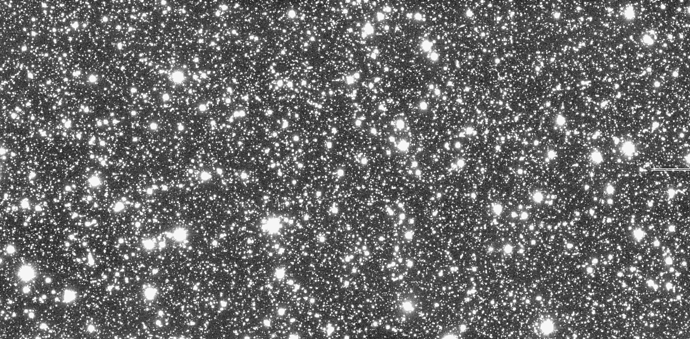Verification Datasets telecon
Attendees: Simon, David, Colin, Zeljko
Colin:
- new Horizons data (Pluto) with HSC, deep in the bulge
- horrific image, packed with stars
- slow processCcd problems
- much of the code makes assumptions about the number of sources, and there are performance hits
- matcher having issues, lots of loops
- 53 min, 30 min were in the matcher
- Colin used a k-d tree of the sources to help with the matching, matching now ~1 min.
afw.match.GaussianProcess - also set hard upper limit on the number of PSF stars (~100), it was trying to use ~2000
- now down to ~11 min
- one of these images could be used to test the runtime of a package, make sure no changes
dramatically affect the runtime - deblending turned on but hasn’t characterized it yet
- more saturated stars
- it was trying to use the brightest stars in the frame for matching but
- using PanSTARRS as reference catalog
- maybe add a rough zeropoint to each obs package that can help figure out the
saturation limit for each visit
Simon:
- people at DESC meeting right now
- Rahul Biswas and Bryce Kallenbach (at UW) have been trying to compare input SNE and AGN lightcurves
and comparing to what comes out of the stack - finding systematically lower values of flux (a little bit) than predicted by
the truth values, less than a ~1% or so - could be aperture correction or something like that
- u-band is complete garbage, off by ~4x, not sure what’s wrong
https://github.com/DarkEnergyScienceCollaboration/Monitor/issues/29 - issues with blended objects, no deblending in forced photometry, multifit is supposed to fix this
but it doesn’t allow amplitudes to vary per epoch (wihin a given band)
the way to do the lightcurves is to do forced photometry on difference images (also no deblending),
but if both are varying then you are hosed - run 2 between now and Sep., a few blockers, need to be fixed first
- want to be able to choose the data based on some quality cuts
-not clear how this will work, Simon added some things to LDM-151 that we need tools for “data discovery”
in software primatives (9.22) - need a PSF homogenized template, PSF footprint size is allowed to vary which can cause problems
- some rolloff on the edges which are causing lots of false positives on the edges, because not flatfielding
sims specific issue
- want to be able to choose the data based on some quality cuts
- want to add difference imaging
David:
- working on rerunning the COSMOS data with PSFEx
